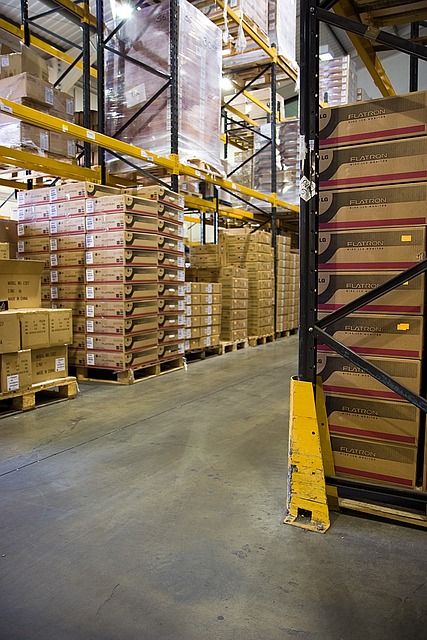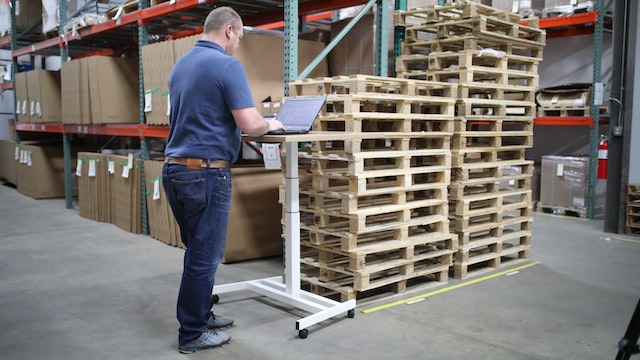Wireless Access Point (WAP) placement is an important aspect of setting up and maintaining a wireless network. Proper placement of WAPs ensures good coverage, capacity, and performance. Here are some best practices for WAP placement:
Conduct a site survey: Before installing any WAPs, conduct a Wireless site survey to identify areas with poor coverage, high demand, and potential sources of interference. This will help you to determine the optimal location for each WAP.
Use ceiling-mounted WAPs: Ceiling-mounted WAPs provide better coverage than wall-mounted WAPs, as they can reach a wider area and provide more uniform coverage.
Place WAPs in the center of the coverage area: In general, WAPs should be placed in the center of the area they are supposed to cover, as this will ensure good coverage for the entire area.
Avoid physical obstructions: Physical obstructions such as walls, ceilings, and furniture can interfere with wireless signals, so it’s important to avoid placing WAPs near these types of obstructions.
Use multiple WAPs: In large areas, it’s important to use multiple WAPs to ensure good coverage and capacity. This will also help to reduce the risk of congestion and ensure that users have a good experience.
Use Power over Ethernet (PoE): PoE allows WAPs to receive power over the same cable that carries the network data, making it easy to install them in a variety of locations.
Use wireless planning tools: wireless planning tools can help to predict coverage, capacity, and performance of wireless networks, by simulating the environment and giving you an idea of how the wireless network will perform.
Wireless Signal Strength and Noise Levels
Wireless signal strength and noise levels are two important factors that affect the performance of a wireless network.
Wireless signal strength refers to the power level of the wireless signal that is being transmitted. A stronger signal means that the wireless devices will be able to connect to the network more easily and maintain a more stable connection. Signal strength is measured in dBm (decibel-milliwatts) and a higher dBm value indicates a stronger signal.
Noise level refers to the amount of interference present on the wireless channel. Interference can be caused by other wireless networks, electronic devices, or physical barriers. Noise level is also measured in dBm and a higher dBm value indicates more interference.
When setting up a wireless network, it’s important to aim for a high signal strength and low noise level. A high signal strength ensures that devices can easily connect to the network and maintain a stable connection. A low noise level ensures that the wireless network is not affected by interference from other devices.
To improve signal strength, it is recommended to place the wireless access points (WAPs) in central locations, use antennas with a wide coverage area, and avoid obstacles that may block the signal. To reduce noise level, it is recommended to minimize the number of wireless devices that operate on the same channel, use a channel scanner to find the least congested channel, and limit the use of wireless devices that may cause interference, such as microwaves and cordless phones.
Overall, wireless signal strength and noise level are two important factors that can greatly affect the performance of a wireless network. By monitoring and optimizing these factors, you can ensure that your wireless network is performing at its best.
Wifi Installation Popular FAQs
What is the best height for a WiFi access point?
The optimal height for a Wi-Fi access point (AP) depends on several factors, including the layout of your space, the type of building materials used, and the location of the devices connecting to the Wi-Fi network. However, as a general rule, placing the Wi-Fi access point at a height of 6 to 8 feet (1.8 to 2.4 meters) from the floor can help improve signal coverage and reduce interference.
Is it better to put WAP on wall or ceiling?
The choice between mounting a Wi-Fi access point (WAP) on a wall or ceiling depends on factors such as the coverage area, building materials, and aesthetics. In general, ceiling mounting is often preferred as it provides a more centralized location and can result in better signal coverage. With a higher vantage point, the WAP can radiate signals downward and outward, covering a larger area and minimizing obstructions from furniture or other objects. However, wall mounting might be a better option in specific cases, such as when dealing with high ceilings or when there are limitations for ceiling installation. Ultimately, the decision should be based on an evaluation of the space and its specific requirements to ensure optimal Wi-Fi performance and coverage.
How many wireless access points per square foot?
The number of wireless access points (WAPs) needed per square foot depends on factors such as the desired network capacity, building materials, and the type of devices being used. As a general guideline, one WAP can typically cover approximately 2,500 to 3,000 square feet in residential or small office environments with minimal interference. In more complex or densely populated spaces, such as large offices or schools, the coverage area per WAP might be reduced to 1,500 square feet or less. It’s essential to perform a site survey and consider factors such as user density, bandwidth requirements, and potential sources of interference to determine the appropriate number of access points for your specific environment.
Should Wi-Fi access point be upstairs or downstairs?
The placement of a Wi-Fi access point (WAP) in a multi-story building depends on factors such as building layout, materials, and the distribution of devices using the Wi-Fi network. In general, placing the WAP on an upper floor is preferable, as the signal can propagate downward more effectively and cover a larger area. However, the optimal location for a WAP in a multi-story building may vary based on specific requirements and potential signal obstructions. To ensure the best Wi-Fi coverage, it is advisable to conduct a wifi site survey, test signal strength in different areas, and consider installing additional access points if needed.
In terms of their interference potential, which materials impact Wi-Fi signal performance, and in what order?
Wi-Fi signals can be affected by various types of materials, often resulting in signal degradation, speed reduction, or even loss of connectivity. Here’s a general order of materials from most to least obstructive for Wi-Fi signals:

- Metal: Metal is the most challenging material for Wi-Fi signals to pass through, causing significant signal loss. This includes steel, aluminum, copper, and wire mesh. Metallic racks for example, especially when laden with goods, can block and reflect Wi-Fi signals, creating areas of poor connectivity known as ‘dead zones.’ This effect is particularly pronounced if the Wi-Fi access points are placed poorly relative to the racking system. The height of the racks and the narrow aisles typical of warehouse environments can further complicate Wi-Fi signal propagation.
- Concrete and Brick: These materials are very dense and can absorb or reflect Wi-Fi signals, resulting in considerable signal degradation. This is particularly relevant in buildings with concrete or brick walls, floors, or ceilings.
- Plaster and Drywall: These materials can also disrupt Wi-Fi signals but generally to a lesser degree than metal or concrete. The thickness and composition of the plaster or drywall can influence the degree of interference.
- Glass: While glass doesn’t block Wi-Fi signals as much as metal or concrete, it can still cause a significant reduction in signal strength, especially if it’s a type of insulating or safety glass.
- Wood: Wood can interfere with Wi-Fi signals, but typically less so than the above materials. The impact varies based on the thickness and type of wood.
- Water: Wi-Fi signals struggle to pass through water. This is relevant not only for bodies of water but also for large objects containing water, such as human bodies or houseplants.
- Insulation: Some types of insulation, particularly foil-backed insulation, can obstruct Wi-Fi signals.
- Plastic and Glass: These materials have a lower impact on Wi-Fi signals but can still cause some degradation.
It’s important to note that the distance from the router, physical obstructions, and interference from other electronic devices can also significantly impact Wi-Fi performance. When designing a Wi-Fi network, consider the layout and materials in the building, and place your router and additional network equipment accordingly.
By following these best practices, you can ensure that your wireless network is set up for optimal performance, coverage, and capacity. Cablify is a leading Wireless Access Point Installation company offering of Wifi Solutions for Businesses.



